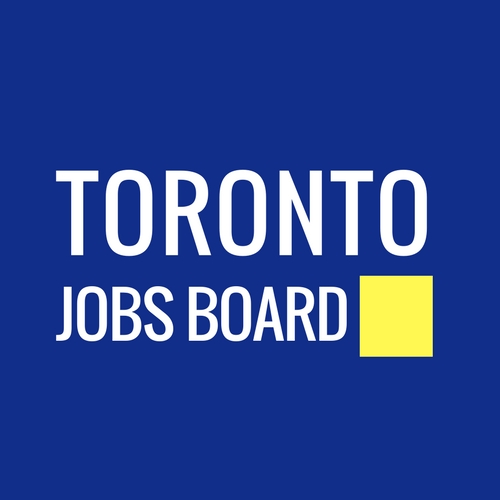Mentorship accelerates career growth by providing guidance and valuable industry insights. It helps professionals navigate challenges and achieve goals.
Mentorship plays a vital role in career development. Experienced mentors offer advice, share knowledge, and provide support. They help mentees set clear career goals and develop strategies to achieve them. Mentors also introduce mentees to valuable networks and opportunities. This relationship fosters personal and professional growth.
Mentees gain confidence, improve skills, and enhance their career prospects. Effective mentorship can lead to better job satisfaction and faster career progression. The benefits of having a mentor are long-lasting. Investing in a mentoring relationship can be a game-changer for anyone serious about their career.
Importance of mentorship
Mentorship plays a crucial role in career growth. It offers guidance, support, and valuable insights that can significantly impact professional development. The importance of mentorship cannot be overstated as it helps individuals navigate their career paths more effectively, making informed decisions and avoiding common pitfalls.
Benefits for mentees
Mentees gain a lot from mentorship. It offers personalized guidance and support, helping them achieve their career goals faster.

Mentees can benefit in several ways:
-
Knowledge and skill development: Mentors share their expertise, enhancing the mentee's knowledge base.
-
Networking opportunities: Mentees get access to the mentor's network, opening doors to new opportunities.
-
Increased confidence: Regular feedback and encouragement boost the mentee's confidence.
-
Goal setting: Mentors help mentees set realistic and achievable career goals.
Benefits for mentors
Mentors also gain from the mentoring relationship. It is a mutually beneficial arrangement that fosters growth on both sides.
Mentors can benefit in various ways:
-
Personal satisfaction: Mentors feel fulfilled by helping others succeed.
-
Enhanced leadership skills: Mentoring hones leadership and coaching abilities.
-
Fresh perspectives: Interaction with mentees provides new insights and ideas.
-
Professional growth: Mentors expand their own network and learn from mentees.
Types of mentorship
Mentorship plays a crucial role in career growth. It provides guidance, support, and valuable insights to accelerate professional development. Understanding the types of mentorship can help you find the right mentor to help you achieve your career goals.
Formal mentorship
In a formal mentorship, organizations usually pair mentors and mentees based on their skills and goals. This type of mentorship is structured and often has a clear timeline and objectives. Here are some key features of formal mentorship:
-
Structured meetings: Regular, scheduled meetings to discuss progress.
-
Defined goals: Specific career objectives to achieve.
-
Company-sponsored: Often part of a company’s development program.
Formal mentorship programs often involve:
|
Aspect |
Description |
|---|---|
|
Duration |
Typically 6 months to 1 year |
|
Focus |
Skill development and career planning |
|
Resources |
Access to training materials and networking events |
These programs are beneficial because they provide a clear path for growth and frequent feedback, which helps in making consistent progress.

Informal mentorship
Informal mentorship happens naturally and is less structured. It usually develops from existing relationships and does not follow a strict schedule. Key characteristics include:
-
Flexible meetings: Meetings are arranged as needed.
-
Personal connection: Based on mutual respect and trust.
-
Spontaneous support: Guidance provided as situations arise.
Informal mentorship often involves:
|
Aspect |
Description |
|---|---|
|
Duration |
Can last for many years |
|
Focus |
Broad career advice and life coaching |
|
Resources |
Personal experiences and insights |
Informal mentorship is valuable because it offers personalized support and can adapt to changing needs over time. This type of mentorship often leads to strong, long-lasting professional relationships.
Finding a mentor
Mentorship plays a vital role in career growth. Finding a mentor can be challenging but incredibly rewarding. A mentor provides guidance, shares knowledge, and offers support through different career stages. This section explores effective strategies for finding a mentor.
Networking strategies
Networking is key to finding a mentor. Start by attending industry events and conferences. These gatherings offer a chance to meet experienced professionals. Make a list of events in your area and attend them regularly.
Here are some networking strategies to consider:
-
Join professional organizations: Become a member of industry-specific groups. These organizations host events and workshops.
-
Attend meetups: Look for local meetups related to your field. Meetups are informal and provide a relaxed environment.
-
Volunteer: Volunteering at events gives you a chance to interact with industry leaders. It also shows your commitment.
-
Utilize alumni networks: Connect with alumni from your school or university. Alumni often enjoy helping fellow graduates.
Creating a personal pitch can also be helpful. Here’s a simple template:
|
Element |
Example |
|---|---|
|
Introduction |
“Hi, I’m [Your Name], a [Your Job Title] at [Company].” |
|
Interest |
“I’m very interested in [specific area of interest].” |
|
Request |
“I’d love to hear about your experience and any advice you have.” |
Leveraging online platforms
Online platforms are powerful tools for finding mentors. LinkedIn is one of the best platforms for professional networking. Start by creating a comprehensive profile. Highlight your skills, experience, and career goals.
Follow these steps to leverage online platforms:
-
Join LinkedIn groups: Participate in discussions and share insights. Groups related to your industry can help you connect with potential mentors.
-
Send personalized connection requests: When sending a connection request, include a personalized message stating why you want to connect.
-
Engage with content: Like, comment, and share posts from industry leaders. This increases your visibility.
-
Use mentorship platforms: Platforms like Mentoring.org and Ten Thousand Coffees match mentors with mentees.
Here’s a sample message for a connection request:
Hi [Name],
I’m [Your Name], a [Your Job Title] at [Company]. I admire your work in [specific area]. I’d love to connect and learn more about your experience.
Best,
[Your Name]
By using these online strategies, you can expand your network and find a mentor who aligns with your career goals.
Building a mentorship relationship
Mentorship plays a crucial role in career growth. Building a mentorship relationship can provide invaluable guidance, support, and insight. A strong mentorship relationship helps mentees navigate their career paths, set goals, and enhance skills. Let's explore how to build a successful mentorship relationship.
Setting goals
Setting clear, achievable goals is essential in a mentorship relationship. Goals help provide direction and measure progress. Here are some steps to set effective goals:
-
Identify career objectives: Understand what you want to achieve in your career. This could include gaining new skills, advancing to a higher position, or changing career paths.
-
SMART goals: Ensure your goals are Specific, Measurable, Achievable, Relevant, and Time-bound. For example, instead of saying, "I want to improve my skills," say, "I want to complete an advanced Excel course in three months."
-
Break down goals: Divide larger goals into smaller, manageable tasks. This makes it easier to track progress and stay motivated.
Here's a simple table to illustrate SMART goals:
|
Goal Element |
Description |
|---|---|
|
Specific |
Clearly define what you want to achieve. |
|
Measurable |
Set criteria for measuring progress. |
|
Achievable |
Ensure the goal is realistic and attainable. |
|
Relevant |
Align the goal with your broader career objectives. |
|
Time-bound |
Set a deadline to achieve the goal. |
Review and adjust your goals regularly as necessary. This helps keep the mentorship relationship dynamic and responsive to changing career needs.
Maintaining communication
Effective communication is the backbone of a successful mentorship relationship. Here are some tips for maintaining open and consistent communication:
-
Regular meetings: Schedule regular meetings to discuss progress, challenges, and feedback. Depending on your needs, these could be weekly, bi-weekly, or monthly.
-
Use multiple channels: To ensure flexibility and accessibility, use various communication channels, such as email, phone calls, or video chats.
-
Be transparent: Share your thoughts, concerns, and successes openly. This builds trust and fosters a supportive environment.
Consider setting up a communication plan. Here's an example:
|
Frequency |
Mode of Communication |
Purpose |
|---|---|---|
|
Weekly |
|
Progress updates |
|
Bi-weekly |
Video Call |
Detailed discussions |
|
Monthly |
In-person Meeting |
Review and feedback |
Active listening is crucial. Pay attention to your mentor's advice and ask questions. This ensures you fully understand their guidance and can apply it effectively.
Maintaining communication fosters a supportive mentorship relationship, driving career growth and success.
Challenges in mentorship
Mentorship provides guidance, support, and knowledge transfer. Yet, mentorship has its challenges. Understanding these challenges can help mentors and mentees foster more effective relationships.
Time constraints
Time constraints often pose significant challenges in mentorship. Both mentors and mentees usually have busy schedules, and finding the right time for regular meetings can be tough. This issue can lead to irregular communication and slow progress.
Key issues due to time constraints:
-
Irregular meetings: Lack of consistent meetings can hinder the flow of guidance.
-
Delayed feedback: Mentees may have to wait long for feedback, affecting their growth.
-
Missed opportunities: Both parties might miss out on timely discussions and opportunities.
To manage time better, both parties can use some strategies:
-
Set a schedule: Agree on a regular meeting time.
-
Use digital tools: Use calendars and reminders to keep track.
-
Be flexible: Be open to rescheduling if conflicts arise.
The table below highlights common time-related issues and solutions:
|
Issue |
Solution |
|---|---|
|
Irregular meetings |
Set a regular schedule |
|
Delayed feedback |
Use digital tools for quick communication |
|
Missed opportunities |
Be flexible with timings |
Mismatch of expectations
A mismatch of expectations can strain the mentor-mentee relationship. Both parties might have different visions of the mentorship process. Clear communication is essential to align their goals and expectations.
Common mismatched expectations include:
-
Goals: Mentees might have different career goals than what mentors assume.
-
Commitment level: Mentors may expect more commitment than mentees can provide.
-
Communication style: Different preferences in communication can cause misunderstandings.
Both mentors and mentees can address these mismatches by:
-
Setting clear goals: Discuss and agree on common goals at the beginning.
-
Regular check-ins: Have regular discussions to ensure both parties are on the same page.
-
Open communication: Encourage honest and open dialogue to address any issues.
The table below highlights common expectation mismatches and solutions:
|
Expectation Mismatch |
Solution |
|---|---|
|
Different Goals |
Set clear, common goals |
|
Varying Commitment Levels |
Discuss and agree on commitment expectations |
|
Communication Styles |
Establish a preferred communication method |
Measuring success
Measuring success in mentorship is important for both mentors and mentees. It helps ensure that the relationship is beneficial and goals are being met. Here’s how you can measure success effectively.
Tracking growth
Tracking growth is essential for understanding the impact of mentorship on career development. Here are some key methods:
-
Set clear goals: At the beginning of the mentorship, establish specific, measurable, achievable, relevant, and time-bound (SMART) goals.
-
Regular check-ins: Schedule regular meetings to discuss progress and challenges. This helps keep the mentee on track.
-
Document progress: Maintain a journal or log to record milestones and achievements. This provides a tangible record of growth.
Tracking these elements helps in understanding the effectiveness of the mentorship process.
Feedback mechanisms
Effective feedback mechanisms are essential for continuous improvement. Here are some strategies:
-
Frequent feedback: Provide feedback regularly to address issues promptly and keep the mentee motivated.
-
Constructive criticism: Offer constructive criticism that helps the mentee understand their weaknesses and how to improve them.
-
Peer reviews: Involve peers in feedback to provide a well-rounded perspective.
-
Self-assessment: Encourage mentees to self-assess their performance and identify areas for improvement.
Utilizing a feedback form can streamline this process:
|
Criteria |
Rating (1-5) |
Comments |
|---|---|---|
|
Communication skills |
4 |
Shows great improvement. |
|
Technical expertise |
3 |
Needs more practice on advanced topics. |
These feedback mechanisms ensure the mentorship relationship is productive and aligned with career growth objectives.
Mentorship in different industries
Different industries benefit from mentorship in unique ways. In this detailed examination, let's explore how mentorship impacts various sectors.
Corporate sector
In the corporate sector, mentorship is vital for professional development. A mentor can help navigate complex organizational structures and corporate culture. They provide insights into effective communication, leadership, and strategic thinking.
Key benefits of mentorship in the corporate sector include:
-
Accelerated career progression: Mentors help mentees identify opportunities for advancement.
-
Skill enhancement: Mentors offer advice on improving technical and soft skills.
-
Networking opportunities: Mentors introduce mentees to influential industry contacts.
-
Increased confidence: Regular guidance boosts self-assurance and decision-making abilities.
Consider the following table summarizing the key roles of mentorship in the corporate sector:
|
Role |
Description |
|---|---|
|
Advisor |
Provides strategic career advice |
|
Coach |
Offers skill development and training |
|
Connector |
Introduces to industry networks |
|
Role Model |
Exemplifies professional behavior |
Creative fields
Mentorship fosters artistic growth and innovation in the creative fields. Mentors help navigate the complexities of the creative process and industry-specific challenges.
Mentorship benefits in creative fields:
-
Artistic development: Mentors provide feedback and help refine creative skills.
-
Portfolio building: Guidance on creating and showcasing a strong portfolio.
-
Industry insights: Mentors share knowledge of industry trends and demands.
-
Collaboration opportunities: Mentors often connect mentees with collaborative projects.
Here's a table highlighting the mentorship roles in creative fields:
|
Role |
Description |
|---|---|
|
Critic |
Offers constructive feedback |
|
Guide |
Helps navigate creative challenges |
|
Networker |
Connects with industry professionals |
|
Inspiration |
Motivates and inspires creativity |
Whether in the corporate world or creative industries, mentorship serves as a cornerstone for career growth and success.
Future of mentorship

Mentorship plays a vital role in career growth. It helps individuals navigate challenges and seize opportunities. Looking ahead, the future of mentorship promises exciting changes driven by evolving trends and technological advancements.
Evolving trends
Mentorship is constantly evolving. New trends are shaping how mentors and mentees connect and grow together. Here are some key trends:
-
Remote mentorship: With remote work becoming the norm, mentorship is no longer confined to the office. Mentors and mentees can now connect from anywhere in the world.
-
Diverse mentors: Companies recognize the importance of diversity and encourage mentorship programs that include mentors from varied backgrounds.
-
Peer mentorship: Traditional top-down mentorship is evolving. Peer-to-peer mentorship is gaining popularity, fostering collaborative learning environments.
-
Short-term mentorship: While long-term mentorships are valuable, there is a rise in short-term, project-based mentorships. These provide quick, targeted guidance.
Mentorship is also becoming more inclusive. Organizations are striving to make mentorship accessible to everyone, regardless of their position or experience level.
These trends are transforming the mentorship landscape, making it more adaptable and inclusive.
Role of technology
Technology is revolutionizing mentorship. It is breaking down barriers and creating new opportunities for connection. Here are some ways technology is reshaping mentorship:
-
Mentorship platforms: Online platforms like LinkedIn and MentorcliQ connect mentors and mentees. These platforms match individuals based on their skills and goals.
-
Virtual meetings: Tools like Zoom and Microsoft Teams make virtual mentorship sessions possible. They allow for face-to-face interactions, even from a distance.
-
AI and machine learning: AI is being used to match mentors and mentees more effectively. Machine learning algorithms analyze profiles to find the best matches.
-
Learning management systems (LMS): LMS platforms provide structured mentorship programs. They include resources, tracking tools, and feedback systems.
Technology also enables mentors to share resources easily. They can send articles, videos, and tools that help mentees grow and learn.
As technology continues to advance, the mentorship experience will become even more personalized and efficient.
Mentorship plays a crucial role in career growth. It offers guidance, support, and valuable insights. A good mentor helps you navigate challenges and seize opportunities. Embrace mentorship to unlock your full potential and accelerate your professional journey. Start seeking a mentor today for a brighter and more successful future.


